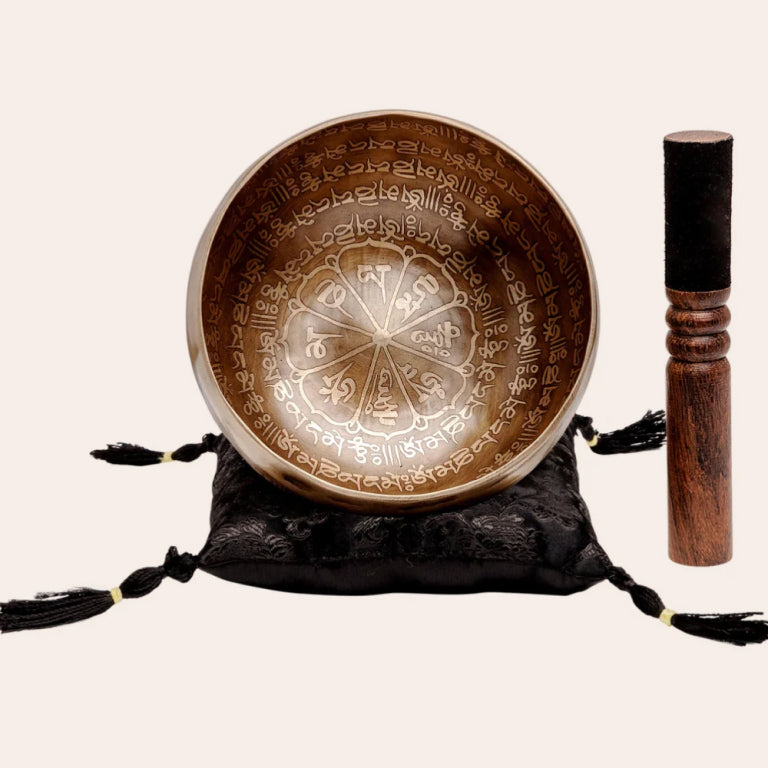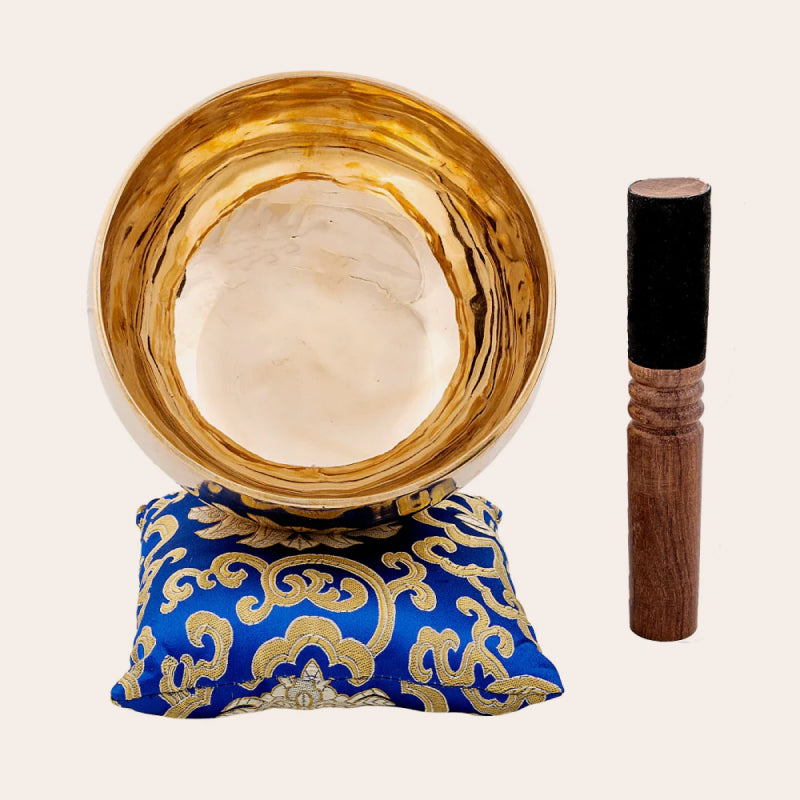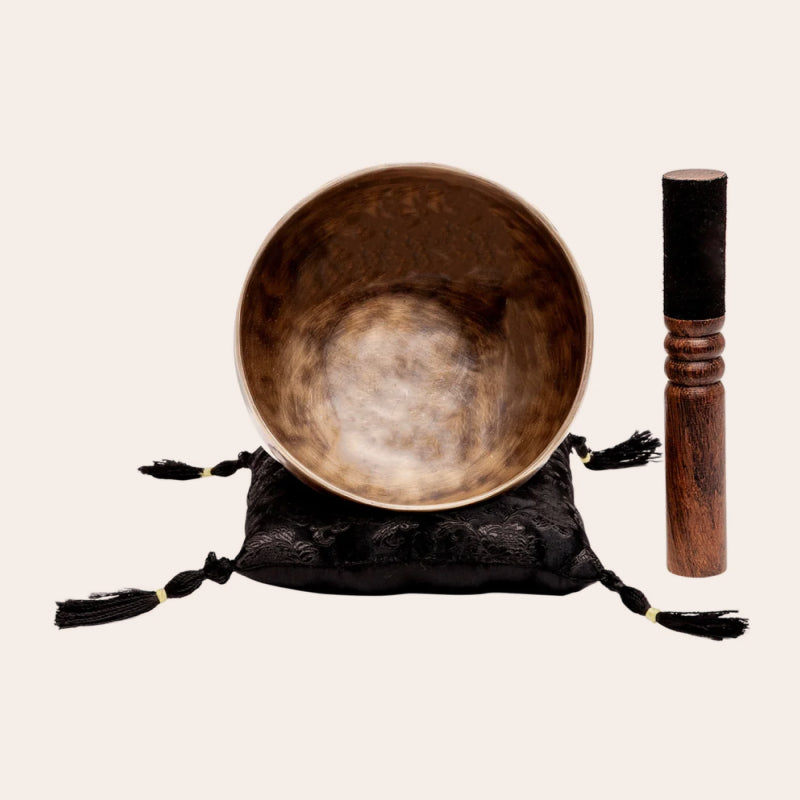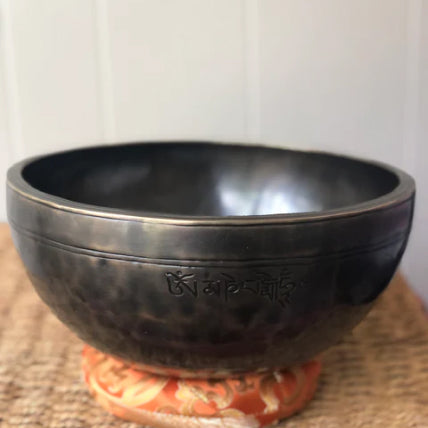If we said ancient paper -- you may think of Egyptian Papyrus, or paper made from animal skins. Right?
There’s an ancient handmade paper called Lokta or Nepali Kagaz used for the last 1,900 years?
Lokta is a multi-layered paper made from the bark of Lokta bushes to last for many years.
Mostly used in religious and government paper since antiquity, Lokta paper has been produced at a higher scale in the last couple of decades to meet overseas export demands. Lokta paper is excellent for journals, cards, manuscripts, paintings, art, and even fashion. Lokta can even be used to make a cardboard-like material, which we use in some of our handmade gift boxes.
Furthermore, the Lokta paper industry is key to Nepal’s development as it employs thousands of women in a country where half the population lives below the poverty line.
At the Ohm Store, we proudly appreciate the heritage of Lokta and the craftsmanship of local artisans who make our Lokta journals by their hand.
So today, we’ll navigate the history, importance, and uses of Lokta paper with the best pens to write on it.
Nepali Kagaz: What’s The History Of Lokta Paper?

Hand-stitched Lokta Paper Journal
Lokta Paper is Nepal’s equivalent of Egypt’s papyrus. Also called Nepali paper (Kagaz), the earliest use of Lokta is attributed to the 1,900-year-old Buddhist scripture Karanya Buha Sutra. Each Lokta paper is lightweight, odorless, and unique, with a leathery feel.
Historically, Lokta paper was used to write religious texts. The Nepalese government then used it for official documents and currency.
Today, Lokta paper is used in writing, wrapping (incense and spices), painting, prayer flags, book covers, book bindings, wallpaper, cards, origami, jewelry, and fashion.
Made from two varieties of a local shrub called Daphne, Lokta is one of the truly indigenous products with raw materials from Nepal’s mountains and the craftsmanship of their traditions. Moreover, the Lokta industry is a major source of income for many working women in Nepal now.
According to the United Nations Development Program on the study on the production of Lokta paper and allo (NTIS 2010)
“The potential for future job creation is high in view of the recent initiatives towards lokta farming. Women, either as workers or as entrepreneurs, play important roles whether it is in collection, cleaning, grading, making paper and finished products or exporting.
Over 70 percent of the workers are women and over 85 percent are based in mountain villages. These mountain villages are often extremely impoverished and lack basic health and education services. Research has shown that an expansion of the industry could push employment to well over 40,000 people.”
How Is Lokta Paper Made?

Nepali Kagaz is made from the barks of Daphne Papyracea (locally known as the Lokta shrub) that grows at altitudes between 6,500 and 9,500 ft. It’s called Rice Paper in Nepal and hardly uses any machines.
- The bark of Loktak shrubs is peeled from September to October from the Southern slopes of the Himalayas.
- They are then boiled for up to five hours, mashed with water, and poured layer into wooden screens for sun drying.
- Finally, the dried sheet is smoothened by machine press and hand-stitched into journals you see in the Ohm Store.
Interestingly, machines don’t come into the production of Loktak paper except in the beginning (for mashing) and the end (for pressing one side of the paper).
Here’s a YouTube video on the production of the Lokta paper:
Handmade Paper Making Operation in Kathmandu, Nepal - Art Life w/ Pangeality Productions
FUN FACT: Once upon a time, Lokta paper was washed with ash to prevent insects and mildew from damaging important manuscripts during production.
How To Support The Cause Behind Lokta?

Tree Of Life Lokta Notebook Set
Historically, Lokta papers were produced in rural Nepal, such as Sindhupalchowk, Kavre, Dolakha, Baglung, Ramechhap, and Myagdi. But today, Lokta is handmade paper strictly made by Nepali artisans.
So, when you buy Lokta paper, you lend a hand in keeping the ancient paper-making process that helps the Nepali community grow.
According to GIZ- The industry currently employs about 4000 families in rural areas in paper making and another 2500 people in Kathmandu in paper product making, 80% of them being poor women from disadvantaged ethnic groups.
To put that into numbers, the Lokta paper industry has over 600 handmade paper production units. And less than 50% of this is used for making 30,000 metric tons of Lokta paper per year.
While that may sound high, the Lokta industry gets that done with 20,000 Nepalese women in 200 odd companies (ECS Nepal).
According to the Cottage Industry Department of Nepal- Handmade lokta-based craft paper products continue to offer considerable economic sustainability for poor rural Nepalese women due to their high-quality niche market potential.
Interestingly, the overseas market is helping the market heavily.
According to the Handicraft Association of Nepal, “the sale of Lokta within the country is around 15 percent of the volume of its overseas market” (ECS Nepal). Currently, Lokta paper products are sold in the U.S, U.K, France, Italy, Germany, Canada, and China.
Journals, diaries, cards, paintings, wallpaper, art, jewelry, and dresses are available from Lokta paper online. So, you can support the cause and appreciate the craft by buying genuine Lokta paper.
How To Write On Lokta Paper?

Hand-stitched Lokta Paper Journal
Lokta Paper has taken a bold stance as more than just a native handicraft but a useful, affordable, and incredible product for people of all ages, shapes, and sizes. You may find it in contemporary conference halls, luxury spas, art exhibitions, or your favorite boutique these days.
But my favorite use for the Lokta paper is journaling.
I find it absolutely incredible to jot down my thoughts, plans, goals, ideas, and poetry in Lokta journals that last generations and lifetimes.
But still, how to use Lokta paper? Are there top tips to keep in mind when writing on it?
When it comes to the right pen to use on Lokta paper, it’s better to understand the Lokta paper a little deeper first.
When you start writing, the paper has a leathery feel to the touch and fabric-like pores.
Like any paper, if you hold the pen too long, the ink may flow into the page behind (bleeding) or on the same page like a feather (feathering). Moreover, fluid ink may appear behind the paper (ghosting).
So, ballpoint pens work really well without any bleeding, feathering, or ghosting unless you purposefully hold the pens for long.
When it comes to gel pens, going for nibs around 0.7 or broader is good. But it’s better to test the nib on the back of the book first before writing over the paper.
Fountain ink pens with broad nibs often bleed into the next page, so go for a medium nib.
Dip pens made of glass are an absolute favorite for writing with a rusting feel and effort.
Rollerball pens, pencils, and brushes are also fun to write with, especially with permanent ink. They make for personalized gifts and memorabilia, especially for crafty people.
Start Writing On Imperishable Paper
Lokta paper is the best handmade paper for writing poetry, journaling, greeting cards, albums, and postcards. We learned Lokta paper is made from the Lokta Bush by indigenous people of Nepal in the traditional way using hands, wooden screens, and the sun.
Lokta paper appreciates the handmade paper industry and ancient traditions of Nepal. Our Lokta journals are typically hand-bound with tan leather and made by local women trained traditionally in the trade.
Don’t hesitate to share your doubts about the Lokta paper with us if you have any. We’d love to talk!
PS: If you’re ever in Nepal, go to handicraft shops at Kupondole, Thamel, and Lazimpat for the best Lokta paper (the best are here, although you’ll find Lokta paper in all areas of Nepal).










